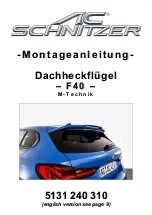
If the vehicle is braked sharply from speeds
above 50 km/h, the brake lamps flash rapidly.
This provides traffic travelling behind you with an
even more noticeable warning.
If the vehicle is travelling at speeds of more than
70 km/h at the beginning of the brake applica‐
tion, the hazard warning lights switch on once
the vehicle is stationary. When pulling away
again, the hazard warning lights switch off auto‐
matically at approximately 10 km/h. You can
also switch off the hazard warning lights using
the hazard warning button.
Cruise control and limiter
Function of cruise control
Cruise control accelerates and brakes the vehi‐
cle automatically in order to maintain a previ‐
ously stored speed.
If you accelerate to overtake, for example, the
stored speed is not deleted. If you remove your
foot from the accelerator pedal after overtaking,
cruise control will resume speed regulation back
to the stored speed.
You can operate cruise control with the cruise
control lever.
If you fail to adapt your driving style, cruise con‐
trol can neither reduce the risk of an accident
nor override the laws of physics. It cannot take
into account road, weather or traffic conditions.
Cruise control is only an aid. You are responsible
for the distance to the vehicle in front, for vehi‐
cle speed, for braking in good time and for stay‐
ing in lane.
System limitations
Cruise control may be unable to maintain the
stored speed on uphill gradients. The stored
speed is resumed when the gradient evens out.
Change into a lower gear in good time on long
and steep downhill gradients. Take particular
note of this when driving a laden vehicle. By
doing so, you will make use of the braking effect
of the engine. This relieves the load on the brake
system and prevents the brakes from overheat‐
ing and wearing too quickly.
Do not use cruise control in the following situa‐
tions:
R
In traffic situations which require frequent
changes of speed, e.g. in heavy traffic, on
winding roads.
R
On slippery roads. Accelerating can cause
the drive wheels to lose traction and the
vehicle could then skid.
R
If you are driving when visibility is poor.
Function of the limiter
The limiter restricts the speed of the vehicle. To
reduce the speed swiftly to the set speed, the
limiter applies the brakes automatically.
You can limit the speed as follows:
R
Variable: for speed limits, e.g. in built-up
areas.
R
Permanent: for long-term speed restrictions,
e.g. when driving with winter tyres fitted.
If you fail to adapt your driving style, the limiter
can neither reduce the risk of an accident nor
override the laws of physics. It cannot take into
account road, weather or traffic conditions. The
limiter is only an aid. You are responsible for the
206 Driving and parking
Содержание E-Class Estate 2017
Страница 2: ......
Страница 3: ......
Страница 8: ......
Страница 9: ...Left hand drive vehicles 6 At a glance Cockpit ...
Страница 11: ...Right hand drive vehicles 8 At a glance Cockpit ...
Страница 13: ...Instrument display standard 10 At a glance Overview of warning and indicator lamps ...
Страница 15: ...Instrument display in the widescreen cockpit 12 At a glance Overview of warning and indicator lamps ...
Страница 17: ...14 At a glance Overhead control panel ...
Страница 19: ...16 At a glance Door control panel and seat adjustment ...
Страница 21: ...18 At a glance Emergencies and breakdowns ...
Страница 584: ......
Страница 585: ......
















































